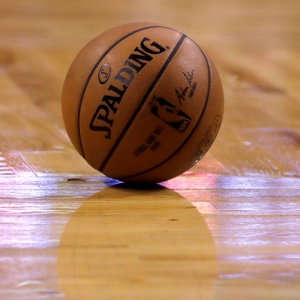Sportsman’s Corner: Dropped antlers
| Published: 01-19-2023 3:21 PM |
By Mike Roche
It seems like one of the fastest growing outdoor pursuits is shed hunting. Whitetail deer drop or shed their antlers (they are not true horns) each year. That process can happen anytime after the peak of the rut in November. All animals with antlers shed them each year. Once the rutting season is over, the hormones in the buck begin to change, causing the antlers to gradually fall off, usually one by one but sometimes at almost the same time. The process can take place as early as December or as late as March.
This Massachusetts deer season, like most, there were reports of hunters either seeing or harvesting bucks who had already dropped antlers. There are also times when bucks are observed still with antlers as winter is ending. Dropped antlers have always been prized and this writer has found a few during hunting seasons. Today, there are a lot of people who take it very seriously and spend a lot of time hiking areas where deer spend the winter months, looking for antlers. What is gaining a lot of interest is training your dog to hunt for them.
A search of the internet will lead you to dozens of postings and you can purchase a kit to help you and your dog, regardless of breed, to get started or a video to teach you. Locally, there are a number of deer hunters who seriously get involved in the hunt for antlers after the season, usually finding several as a result and getting to spend time outdoors, which is always a good thing.
Every five years, MassWildlife conducts a winter waterfowl survey of sites where people feed wild ducks and geese. While the feeding of wildlife is discouraged, there is no state law or regulation that prohibits feeding (though some municipalities do restrict or prohibit feeding). MassWildlife is asking for the public’s assistance to identify current waterfowl feeding locations so that biologists can visit and identify and count these birds. That help will be particularly beneficial this year as the mild temperatures and abundance of open water will make it more of a challenge.
The survey will be conducted statewide during the month of January and includes sites in urban, suburban, and rural areas near fresh, brackish, and salt water. Feeding sites range from municipal parks to backyards where waterfowl may be feeding on spilled bird seed or handouts thrown out someone’s back door.
MassWildlife biologists will visit historic feeding sites from Jan. 9–27. Because feeding locations can change over five years, public input is needed. If you know of a spot where waterfowl are being fed, please let us know by phone at 508-389-6321 or by e-mail at h.heusmann@mass.gov. Please include the town and specific location where waterfowl are being fed. If you are able, please also include the number of ducks and/or geese (preferably by species) that you see at the feeding site at one time.
Mallards are by far the most common duck at feeding sites, but other ducks may be observed as well. American black ducks and Canada geese are common, and wood ducks, pintails, gadwalls, American wigeon, and hooded mergansers are occasionally seen. MassWildlife has been conducting the winter waterfowl survey for the past 50 years. A report summarizing this year’s survey results compared with previous years will be posted in the coming months.
Article continues after...
Yesterday's Most Read Articles
On the topic of feeding wildlife, each winter, MassWildlife receives inquiries from the public regarding whether or not to feed wildlife. Those issues are addressed by the agency in this month’s bulletin on the website. MassWildlife notes that while people have good intentions, supplemental feeding of wildlife typically does more harm than good. Most wildlife seasonally change their behavior to adapt to cold temperatures and scarce food supplies. Supplemental feeding can alter that behavior and have detrimental, and sometimes fatal, effects. Wildlife in Massachusetts have adapted over thousands of years to cope with harsh winter weather, including deep snow, cold temperatures and high winds. The mild weather this year makes feeding even less necessary as wildlife is able to forage easily with no snow cover to deal with and it is already well into the winter season.
Supplemental feed sites congregate wildlife into unnaturally high densities, which does a number of things. It can attract predators and increase risk of death by wild predators or domestic pets. A second impact is the spread of diseases among wildlife or cause other health issues including Rumen acidosis in deer and Aflatoxicosis in turkeys. It can also cause aggression and competition over food, wasting vital energy reserves and potentially leading to injury or death. Feeding also reduce fat reserves, as wild animals use energy traveling to and from the feeding site and further can cause wildlife to cross roads more frequently, therefore increasing vehicle collisions. An additional negatively impact is to vegetation and habitat in areas where feeding congregates animals.
Providing wildlife with food at any time of year teaches them to rely on humans for food, which puts them at a disadvantage for survival and can lead to human/wildlife conflicts. Once habituated behavior is established, it can be very difficult or impossible to change. Simply stated, the best way to help wildlife make it through the winter is to step back and allow the animals’ instincts to take over. To help wildlife near your home, focus on improving the wildlife habitat on or near your property, by including natural food and cover like some conifer cover and regenerating forest or brushy habitat.
This writer often talks about bird feeders and while backyard bird feeding during winter months is generally acceptable, MassWildlife recommends using native plants and water to attract birds to your yard. Fallen bird seed can unintentionally attract many types of wildlife, including bears, turkeys, small mammals like squirrels and mice, and predators like foxes, fishers, and coyotes that feed on small mammals. If you notice unwanted wildlife in your backyard, bring in your bird feeders immediately.
The much-awaited frigid weather is still a no-show and like many others, yours truly is chomping at the bit. After accumulation so much ice fishing gear, it is time to put it to use!
Mike Roche is a retired teacher who has been involved in conservation and wildlife issues his entire life. He has written the Sportsman’s Corner since 1984 and has served as advisor to the MaharFish’N Game Club, Counselor and Director of the Massachusetts Conservation Camp, former Connecticut Valley District representative on the Massachusetts Fisheries and Wildlife Board, has been a Massachusetts Hunter Education Instructor and is a licensed New York hunting guide. He can be reached at mikeroche3@msn.com.
]]>

 H.S. Roundup: Pioneer boys basketball pulls away from Hopkins
H.S. Roundup: Pioneer boys basketball pulls away from Hopkins  UMass basketball: Saint Joseph’s hands Minutemen another heartbreaking loss 78-77
UMass basketball: Saint Joseph’s hands Minutemen another heartbreaking loss 78-77 H.S. Roundup: Caleb Murray’s 20 points powers Greenfield boys basketball past Frontier (PHOTOS)
H.S. Roundup: Caleb Murray’s 20 points powers Greenfield boys basketball past Frontier (PHOTOS) Local Roundup: Big fourth quarter lifts Mahar girls basketball past Easthampton
Local Roundup: Big fourth quarter lifts Mahar girls basketball past Easthampton